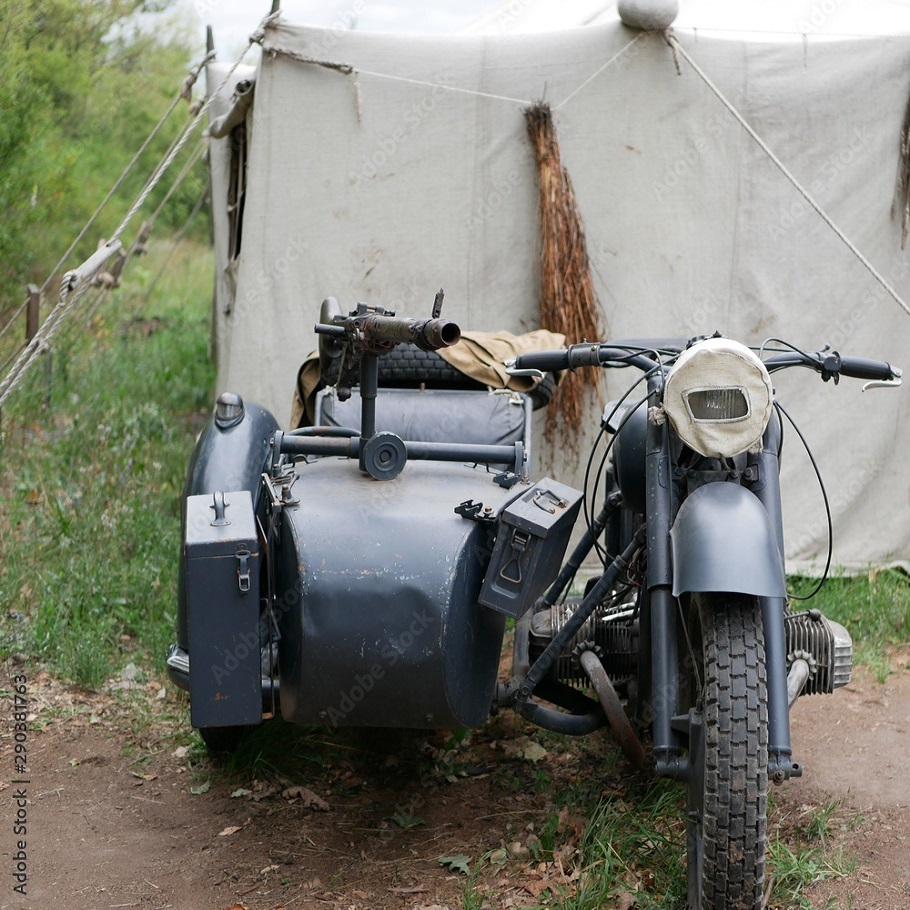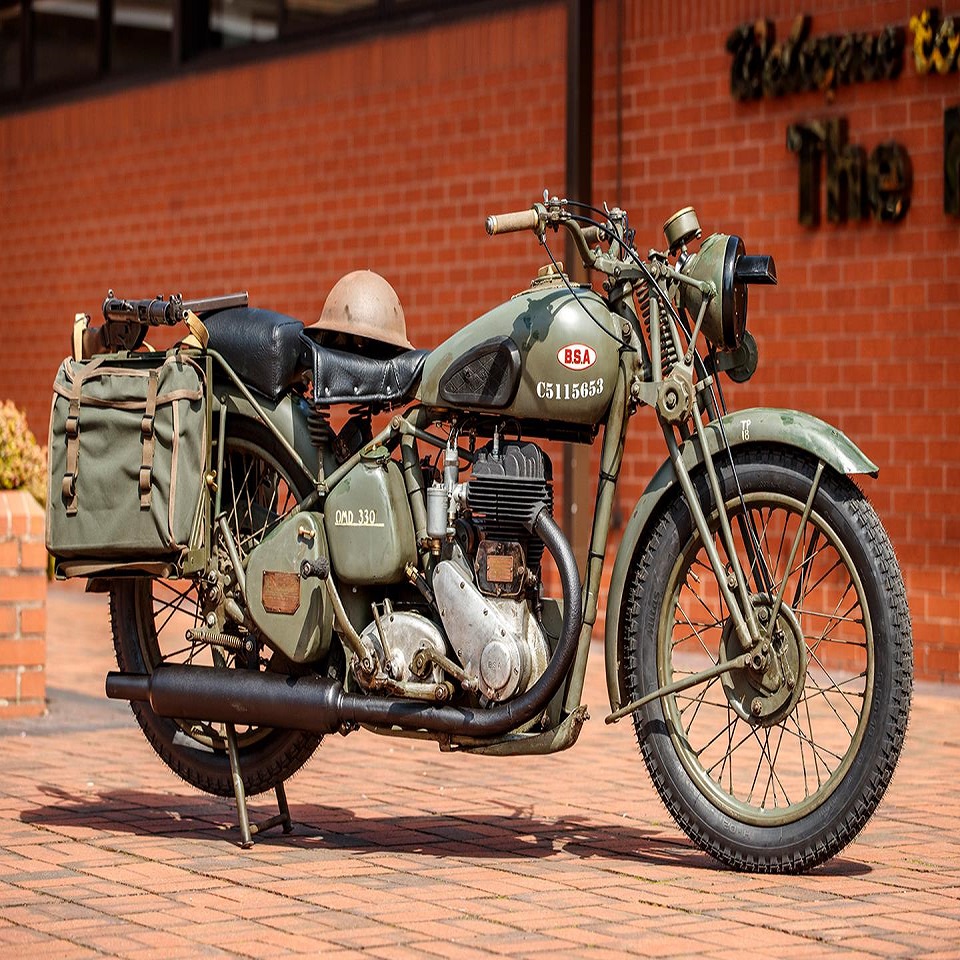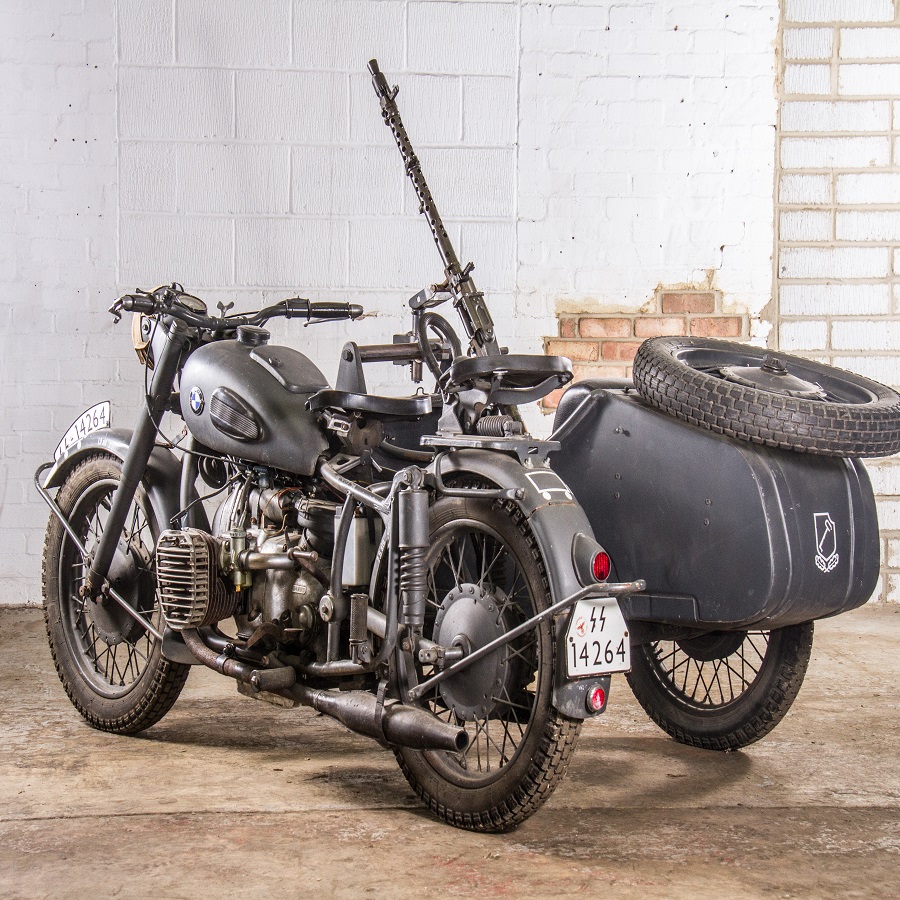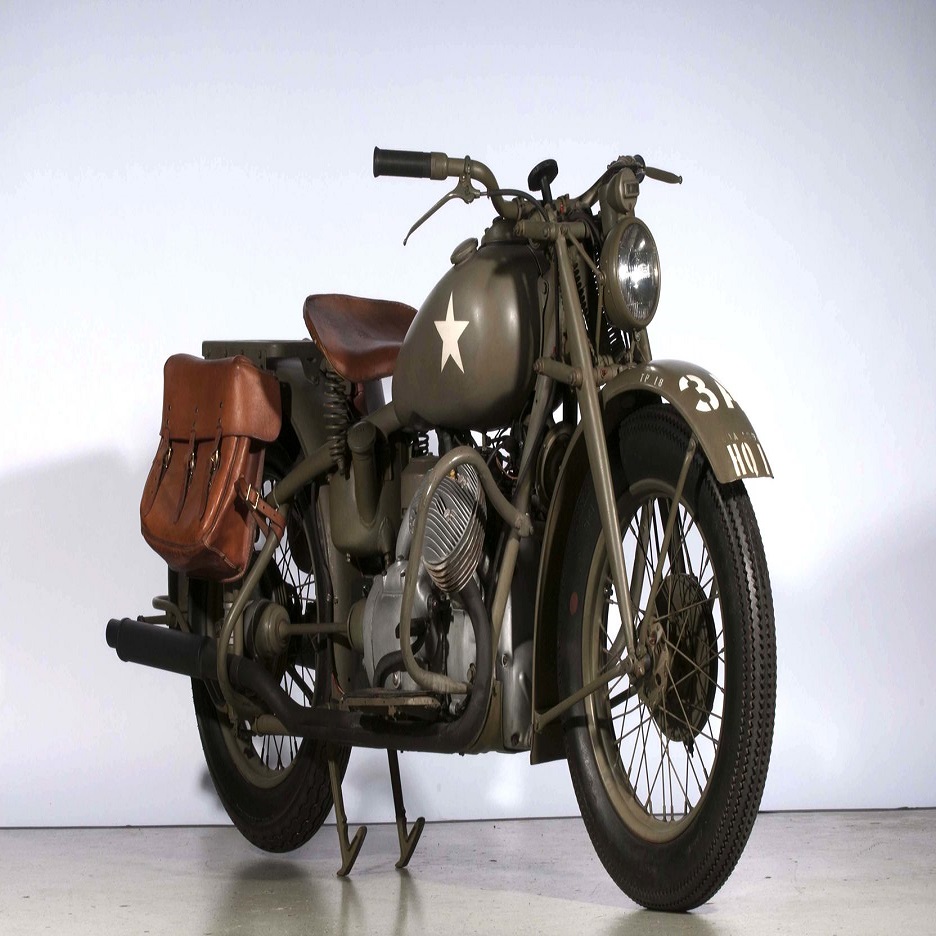Introduction to WW2 Military Motorcycles
Ww2 motorcycle played a pivotal role in WW2. Their speed, agility, and versatility made them invaluable for various military operations. From reconnaissance missions to swift messengers, these two-wheeled vehicles were critical in the fast-paced theatre of war. Let’s delve into the impact and importance of these mechanical war horses.

The Role and Influence of Motorcycles During the War
During WW2, motorcycles served many functions. They quickly carried messages across the front lines, where traditional communications failed. Reconnaissance troops relied on their mobility, navigating the uncertain terrains of war zones. Additionally, motorcycles equipped with sidecars could transport materials and even mount machine guns for increased firepower. In essence, motorcycles were a military asset, enhancing battlefield strategy and mobility.
The FN M12: Belgium’s Military Contribution – ww2 motorcycle
During the turbulent times of WW2, Belgium made a notable contribution to military motorization through the FN M12 motorcycle. This particular model emerged as a remarkable blend of innovation and practicality, symbolizing the nation’s industrial capabilities despite the ensuing chaos of war.
Design and Capabilities of the FN M12
The FN M12 stood out with its robust twin-cylinder flathead piston engine, which propelled the motorcycle to impressive speeds of up to 62 MPH. Its design, influenced by FN’s previous model, the M86, combined utility with stealth, making it an ideal machine for covert military operations.
A distinctive feature of the FN M12 was its versatile reverse gear. This function enabled the motorcycle to maneuver in confined spaces with ease, enhancing its suitability for reconnaissance missions and message delivery tasks. The addition of a sidecar provided extra space for either a passenger or cargo, widening the scope of its application on the battlefield.
Despite its advanced design, the FN M12’s journey was cut short by the German invasion of Belgium. Many units were seized by the Wehrmacht, marking an abrupt end to its production. Nevertheless, the legacy of the FN M12 lives on as a testament to Belgium’s engineering prowess during one of history’s most challenging periods.
The Sturdy BMW R75 – ww2 motorcycle
As WW2 ravaged across diverse terrains, the BMW R75 rose to fame. Its heavy build and dynamic performance made it a favorite among the German forces. Designed for the Wehrmacht, the BMW R75 became a common sight. This robust motorcycle was fundamental on both the Eastern Front and in the North African Campaign.
BMW R75’s Adaptations for the North Africa Campaign
In the harsh conditions of North Africa, the BMW R75 underwent crucial modifications. The dusty deserts prompted a change from metal to rubber fork covers. This helped the motorcycle withstand the abrasive sand and intense heat. Its sidecar could carry a mounted MG 34 machine gun, adding firepower. With these adaptations, the BMW R75 proved indispensable for fast-paced desert warfare. It evolved from simply carrying materials to assisting in mobile infantry operations.
 Zdapp KS 750: The Two-Wheeled Tank
Zdapp KS 750: The Two-Wheeled Tank
Production and Battlefield Use of the KS 750
The Z黱dapp KS 750, often remembered as the two-wheeled tank, was a remarkable machine of WW2. Its making began with Z黱dapp’s strong financial base and production skills. Made tough to withstand varied terrains, it conquered muddy, mountainous, and desert landscapes with equal aplomb.
On the battlefield, the KS 750 was in its element, supporting German forces in many crucial campaigns. Its two driven wheels – one at the rear and one on the sidecar – gave it unparalleled stability and drive. This feature set it apart and positioned it as the vehicle of choice for pressing military tasks.
The motorcycle saw extensive action, notably in the challenging environments of North Africa, Italy, and the Eastern Front. The Germans produced around 18,695 units, signaling the KS 750’s significance. Post-war, this model transitioned into civilian life and served the Finnish Army well.
The KS 750’s rugged design enabled it not just to transport soldiers but also to carry heavy gear and tools. Some units were outfitted with machine guns, bolstering their role in operations. The Z黱dapp KS 750 represented a blend of durability, versatility, and military innovation, making it a key player in war strategies.
Japanese Adaptations: The Type 97 Motorcycle
Japan’s engagement in WW2 saw the adaptation of foreign designs in their military equipment. One significant addition was the Type 97 motorcycle. This two-wheeler enhanced the mobility of the Imperial Japanese Army (IJA), especially for those stationed on the home islands.
Rikuo: The Harley-Davidson Under License by Japan
The Rikuo motorcycle, a licensed copy of the Harley-Davidson, served the IJA with distinction. Its production spanned from 1935 to 1945. During these years, the Type 97, along with variants like the Type 93, became crucial assets for swift military operations. The Rikuo’s resemblance to the American Harley-Davidson highlighted Japan’s ability to adeptly utilize licensed technology for wartime needs.
 The Welbike: Britain’s Compact Paratrooper Motorcycle
The Welbike: Britain’s Compact Paratrooper Motorcycle
During WW2, Britain’s creativity shone through the Welbike’s invention. This compact paratrooper motorcycle offered unique deployment capabilities from the sky. Despite some practical challenges, it marked an innovative shift in battlefield transport.
Practicality and Limitations of the Welbike on WW2 Battlefields
The Welbike’s design aimed for ease of air transport and rapid assembly by paratroopers. Unfortunately, it fell short in rugged terrain and could not carry much gear. Yet, it demonstrated innovative thinking in military mobility during the war.
Norton WD16H and WD Big 4: British Army Staples
The British Army relied heavily on two motorcycles during WW2: the Norton WD16H and the WD Big 4. These bikes were crucial for various operations, from dispatching messages to transporting soldiers.
Comparison Between the WD16H and the WD Big 4 Models
Comparing the Norton WD16H and WD Big 4 reveals several differences between these iconic bikes. The WD16H featured a single-cylinder engine and was used primarily without a sidecar for swift maneuvers. On the other hand, the WD Big 4 had a powerful 633cc engine and was designed for sidecar attachment
The WD16H was appreciated for its reliability and simple maintenance, making it a go-to motorcycle for British soldiers. It completed tasks like guarding convoys and shuttling dispatch riders efficiently.
Conversely, the WD Big 4 shone in its ability to carry heavier loads and support heavier mounts, such as machine guns or mortars. This feature made it a versatile asset on the field, though it was less nimble than the WD16H without its sidecar.
Post-war, both motorcycles continued to be recognized for their service. While they eventually gave way to newer vehicles, their legacy remains etched in military history. The Norton models represent innovation and adaptability – key traits that helped the British Army during the war.
Cushman Airborne Scooter (Model 53) – ww2 motorcycle
As World War 2 progressed, the need for agile and portable transportation increased. The Cushman Airborne Scooter, Model 53, became a standout solution. This lightweight vehicle allowed Allied paratroopers to maintain momentum after landing.
The Airborne Scooter’s Deployment and Capabilities
Produced from 1944, nearly 5,000 Cushman scooters were built for war use. Their design was compact. They could be air-dropped with troops, offering quick mobility upon landing. With a single-cylinder engine, the scooter was not just fast but versatile.
Its small size did not hinder its utility. It carried soldiers, messages, and even weaponry. Some scooters mounted 81 mm mortars or machine guns for defense. Despite their size, they remarkably contributed to troop movements and communication on the battlefield.
 Harley-Davidson WLA: The Liberator
Harley-Davidson WLA: The Liberator
The Harley-Davidson WLA played a crucial role in WW2, nicknamed ‘The Liberator’ for its service. This motorcycle was a modified version of its civilian predecessor, delivering speed and reliability to US forces.
Modifications and Uses of the WLA in WW2 and Beyond
The WLA underwent several changes for military use. A matte paint finish reduced visibility to enemies. Raised fenders and a unique air filter system helped it perform in harsh conditions, from dusty deserts to fording streams. It featured blackout lights for covert operations at night. The bike’s sidecar could carry communication tools, or a mounted machine gun for added firepower.
During WW2, the WLA was used for duties like escorting convoys, scouting, and delivering messages. Post-war, its versatility kept it in production, with more than 90,000 units built. It also gained popularity among collectors for its historical significance and robust design. The WLA remains a symbol of American ingenuity and military might.
 Conclusion – ww2 motorcycle
Conclusion – ww2 motorcycle
In the grand narrative of World War II, countless tales of bravery, sacrifice, and innovation unfold. While tanks and bombers often steal the spotlight, the stories of the motorcycles and their riders serve as an important reminder of the myriad ways warfare was conducted.
These unsung heroes of the war have left an indelible mark on military history, symbolizing the speed, agility, and ingenuity that defined the era. As we reflect on the past, let us also honor those who navigated tumultuous landscapes on two wheels, playing a vital role in the ultimate struggle for freedom and justice.

Leave a Reply